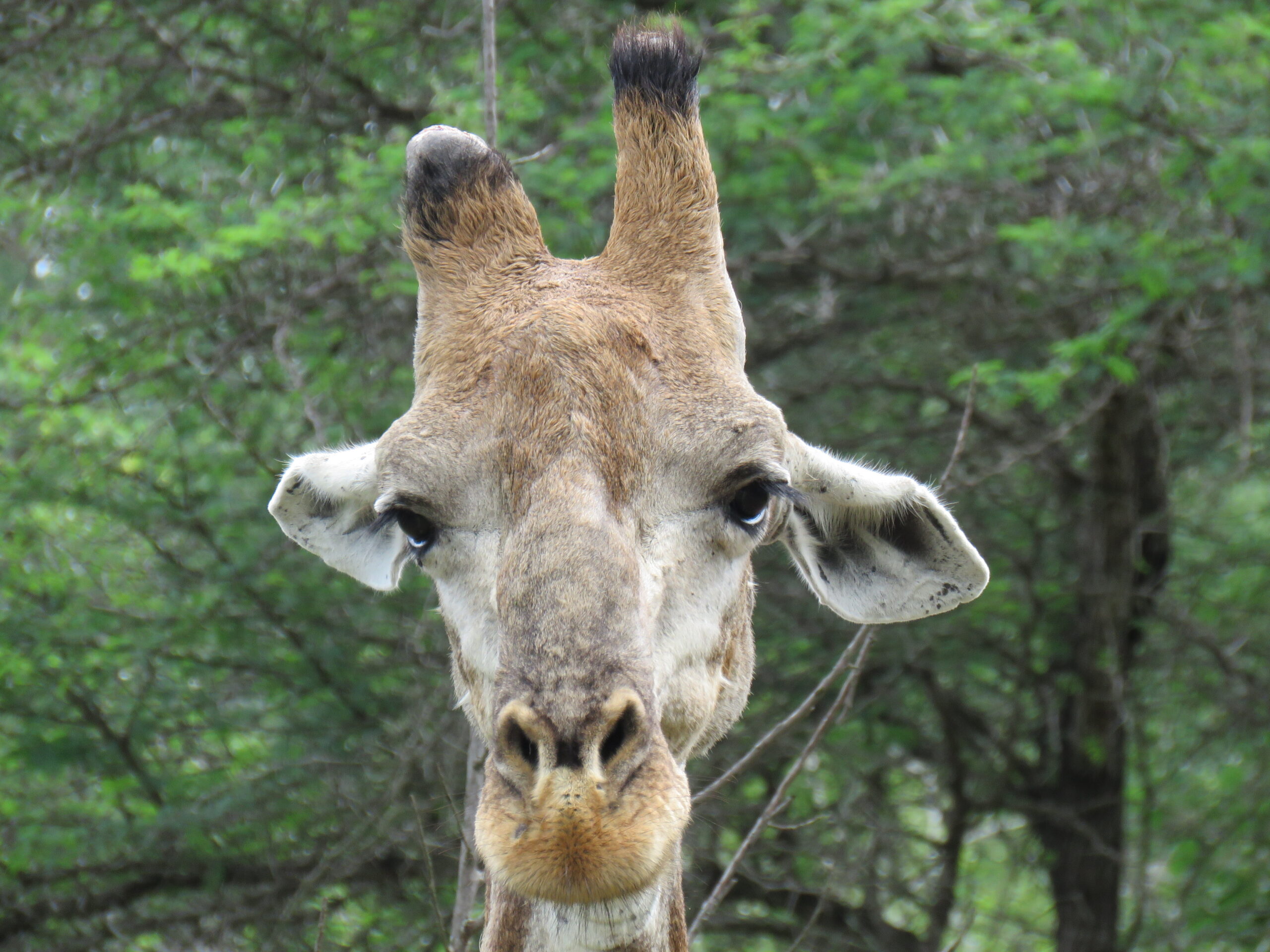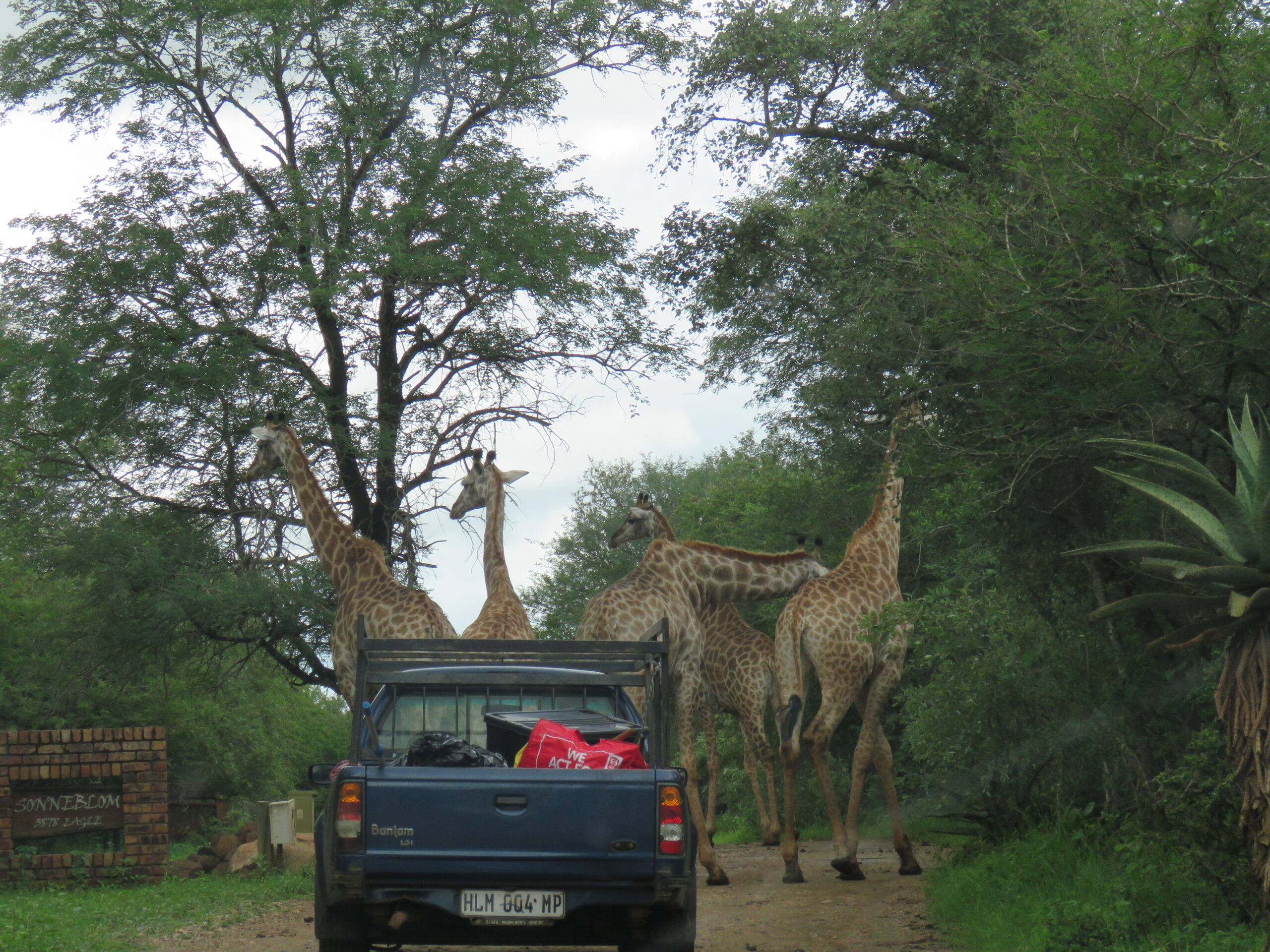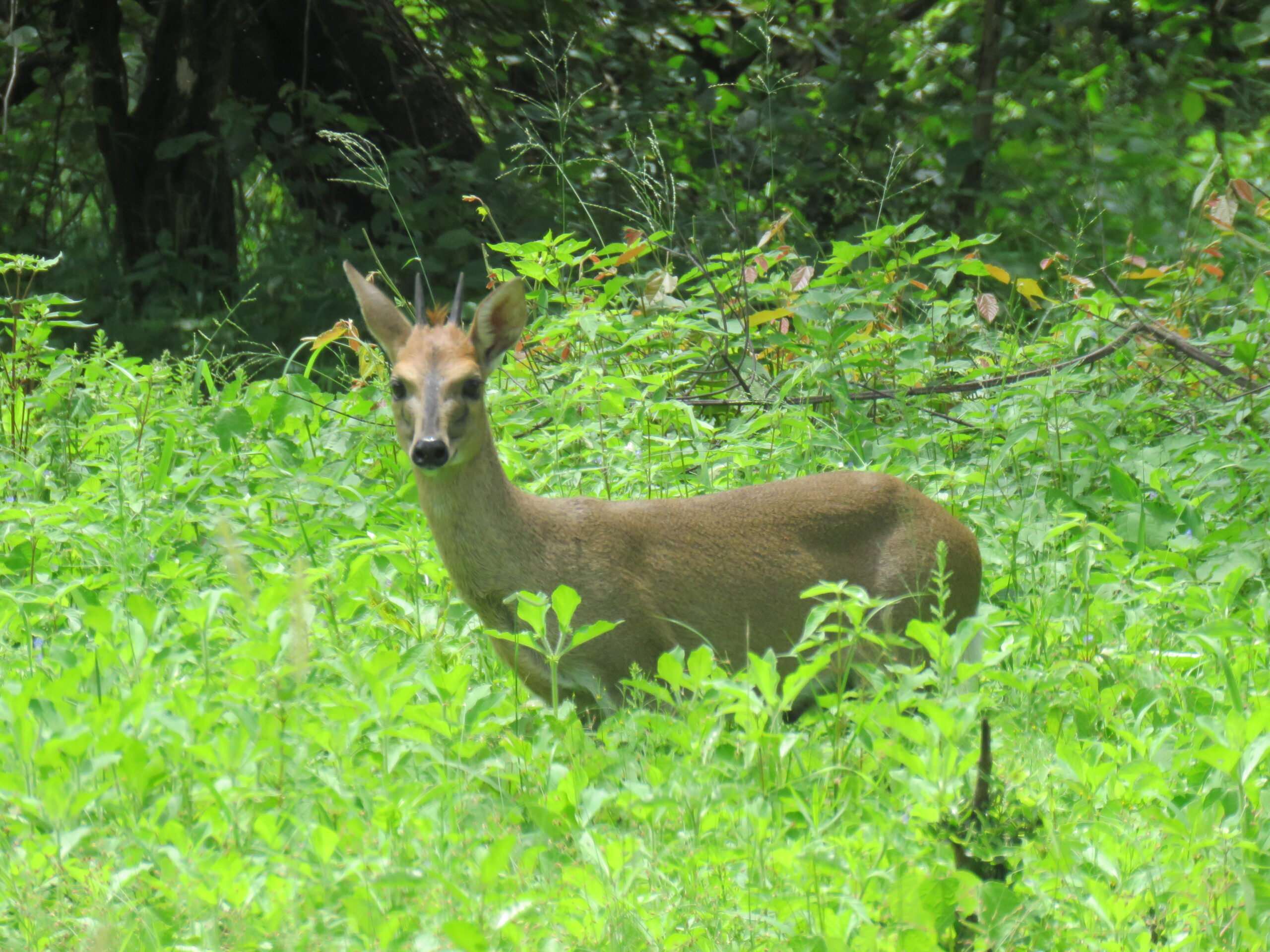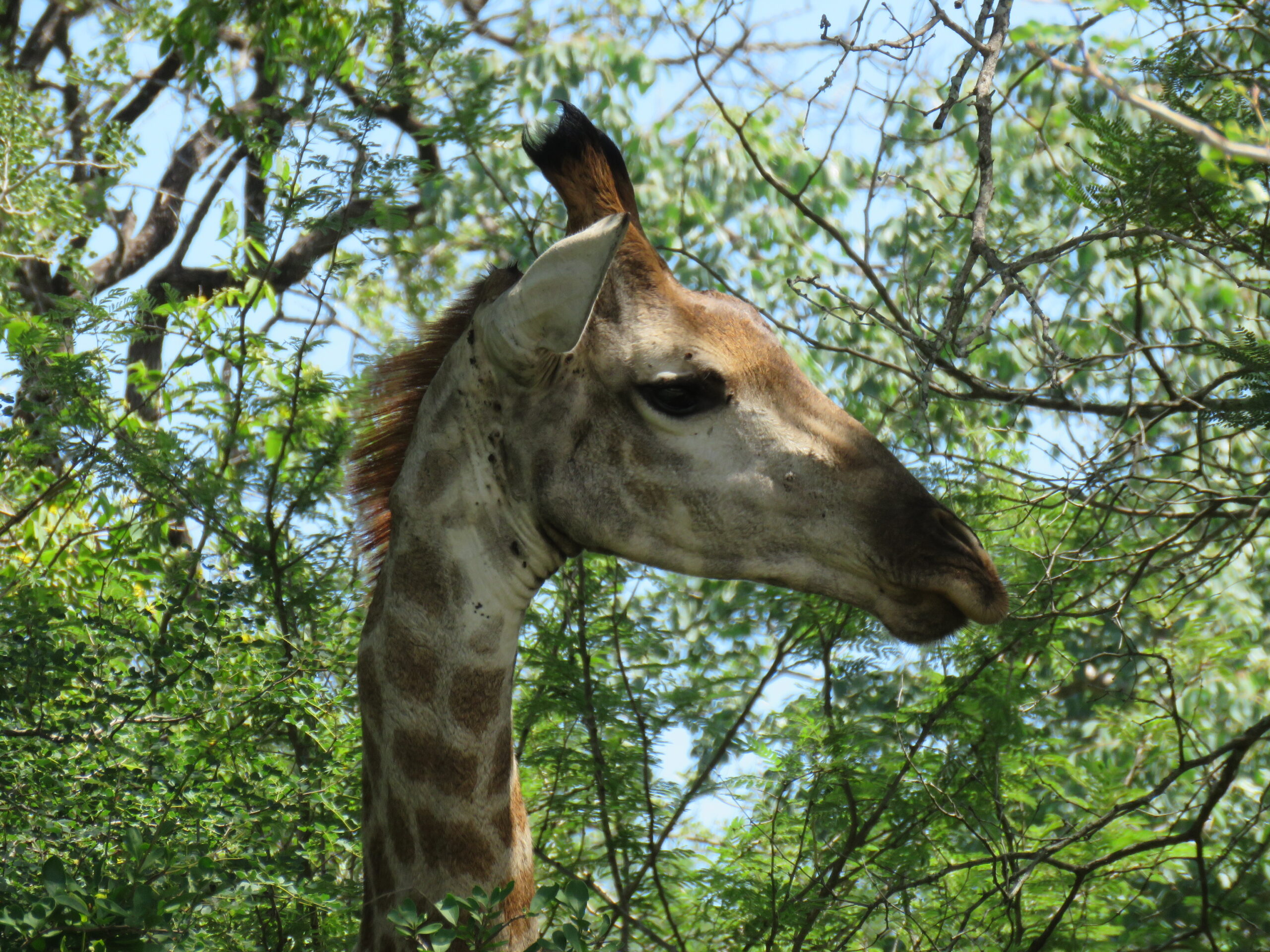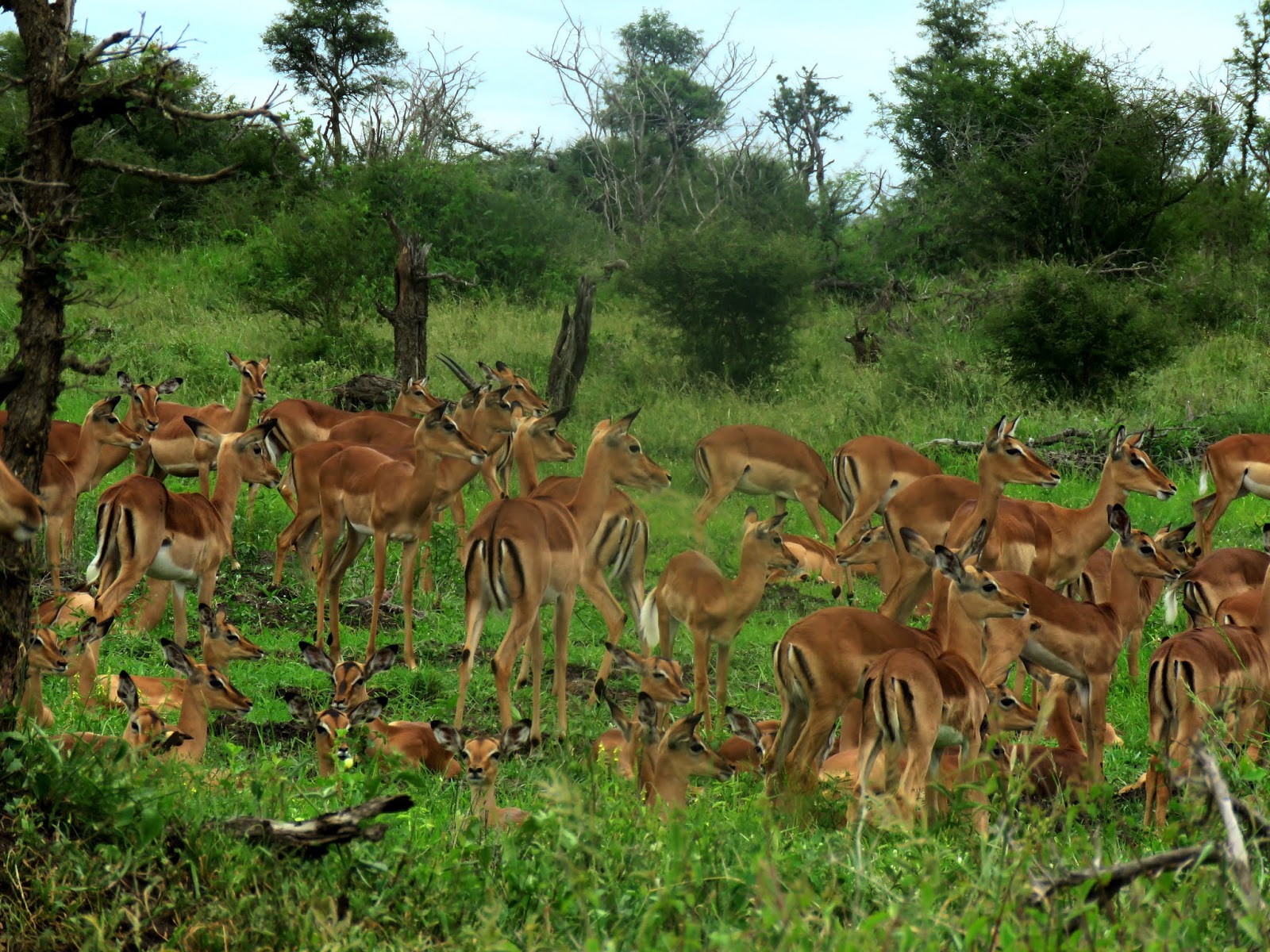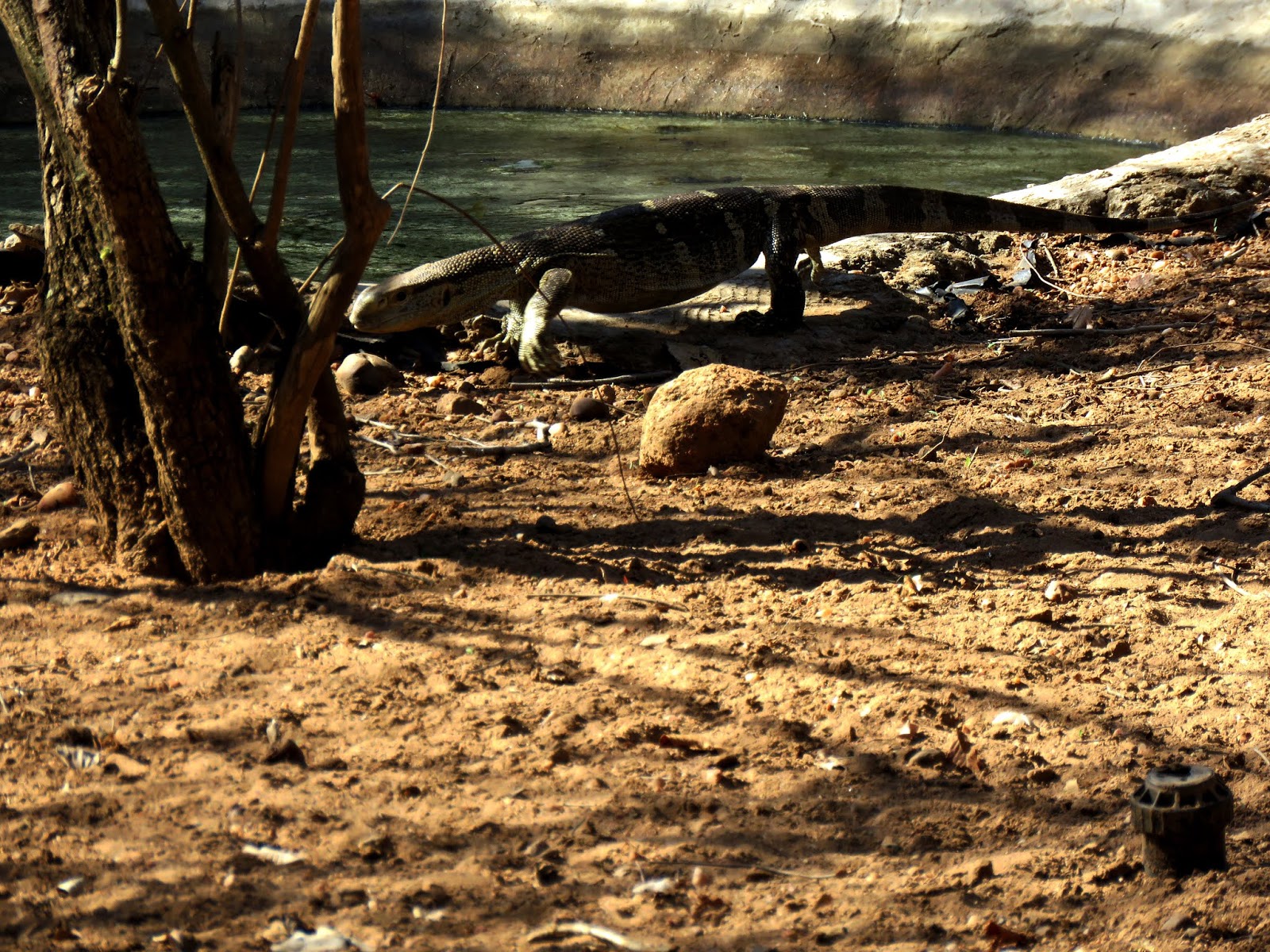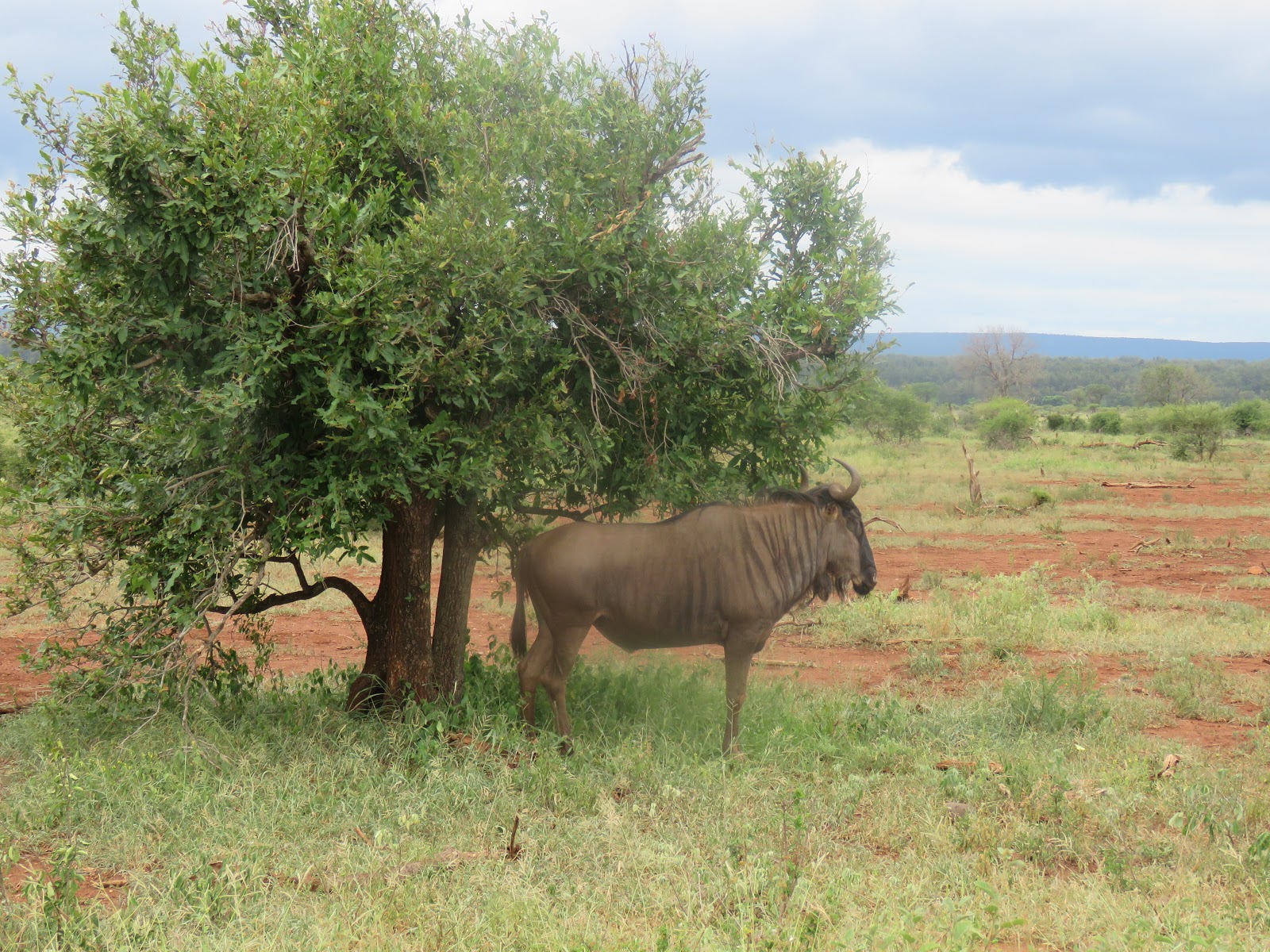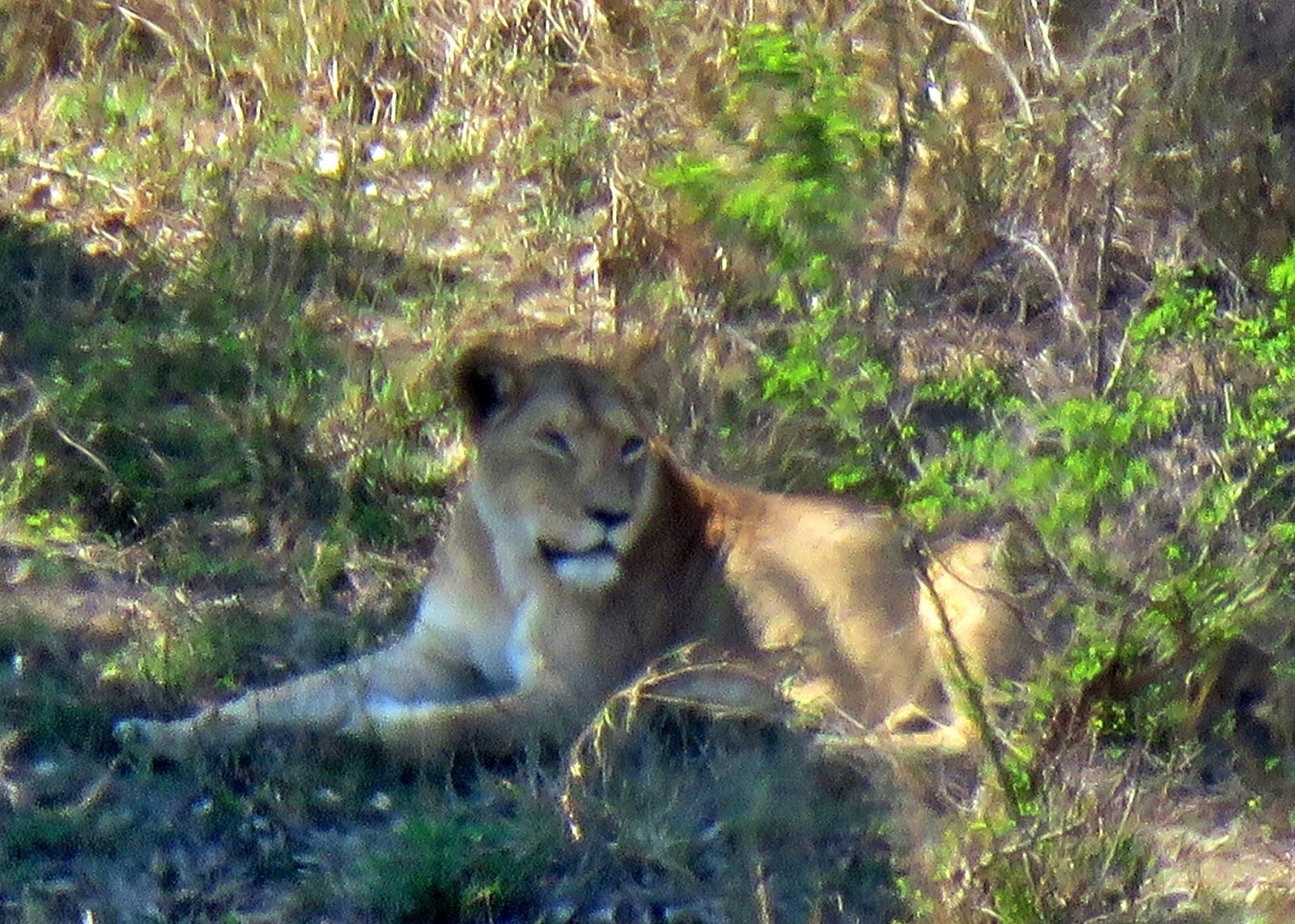
Yesterday was quite eventful in our garden. While stopping in the kitchen to refresh his iced tea, Tom said, “Hurry, get the camera! There’s a giraffe in the driveway!”
We hadn’t seen a giraffe in the driveway since we arrived in Marloth Park in January when we moved into this holiday home. Six or seven giraffes were at the end of the driveway on the road, and we took several photos, hoping at some point they’d come to our garden for a visit. Now, eight months later, they finally came to call.
Not only were they in the driveway, but they were standing close to the house. The tricky part was taking photos since giraffes don’t interact with humans for food, like the other wildlife. They eat the leaves at the top of trees and don’t bend down for pellets or other food offerings from humans.

Subsequently, they are as shy here in Marloth Park as they are in Kruger National Park. They tolerate cars passing but don’t care to interact with humans on foot. When we opened the front door, I could barely get a quick photo when they thundered off, kicking up dust on our dirt driveway.
We decided to leave the front door open since it makes noise upon opening and be patient and wait. They were obviously after the lush green vegetation at the top of a tree close to the kitchen window. We waited patiently. Although we couldn’t get good photos based on their hesitancy around us, we managed to get the few we’re sharing here today.
After all, being within three or four meters of the giant animals is exciting in itself. Where in the world is that possible in the wild? Where in the world is that possible, close to your front door? Nowhere that we know, other than Marloth Park or another game reserve in Africa.

Once they’ve discovered such an “edible” tree, we feel confident they will return at some point. The question becomes: will we happen to be looking out the kitchen window to spot them when they do? In the future, we’ll make a unique point of looking out the front of the house, as opposed to the usual back garden where most of the animals visit. With the dense brush, it may be hard for them to navigate their way back there.
This holiday home consists of the dense bush surrounding the property lines. It’s an excellent factor for privacy and noise reduction but less appealing for giraffes and zebras who seem to avoid getting tangled in the low-lying branches, which warthogs, bushbucks, wildebeests, and kudus, who don’t seem to mind. They’ll maneuver through any dense bush to get to some pellets.

Whereas giraffes don’t bend to the ground to eat, although they bend to drink. Here’s exciting information about giraffe’s eating habits from this site:
“Four facts about giraffe’s eating habits:
The giraffe is the world’s tallest terrestrial animal and thrives on a diet of fresh greens. These curious creatures tower above the bushveld and, despite their gangly appearance and awkward gait, they move with ease through their environment. They survive in arid landscapes, savanna, and open plains; and vary in size and color depending on their region.
The next time you’re in a game viewer and come across a giraffe devouring greenery, take a moment to observe their eating habits. Here are four facts about a giraffe’s eating habits that will ensure you have a deeper understanding of their dietary habits.
1. Giraffes don’t need to compete for food.
Giraffes are browsers that feed off fresh shoots and leaves, and their height advantage means they have access to plenty of foliage that other herbivores cannot reach. The only other animal that can reach into the giraffe feeding zone is the elephant. The pachyderms stretch upwards and reach branches with their trunks, allowing them to grapple lush greens outside of the zone of other browsers. The male giraffe is always in an enviable position, given that they are almost always taller than their female counterparts! There’s not much competition for food sources with these delightfully curious terrestrial animals.
2. Giraffes eat old bones.
When herbivore animals eat bones, it is commonly referred to as osteophagia. The reason for digesting such unpalatable items is purely to supplement their diet with calcium and phosphorus. If their diet lacks nutrients, giraffes will bend down to the ground to scrounge for old bones. They will then chew/twirl the bones in their mouth to extract as many minerals as possible.

3. Giraffe’s favorite food is acacia. But acacia trees talk.
The bushveld is dotted with African acacia trees, which have juicy leaves and a thorny spine. Giraffes use their prehensile tongue to grip the leaves and extract the greenery without disturbing the thorny bits. Because this is their favorite meal, it means that our tall creatures tend to journey towards belts of acacia. Acacia will release an excess of tannins when under threat from overfeeding, and this compound leaves the greenery tasting incredibly bitter. The other trees will recognize the tannin release as an alarm system and follow suit. Giraffes activate the natural alarm system in acacia trees – a truly fascinating fact!
4. When a giraffe drinks water, it’s quite a process.
Giraffes only drink every few days and gain most of their moisture from their herbivorous diet. When they do drink, they approach their water source with caution. They scan their environment for potential threats, hesitate, stand for a while, and then decide to drink. The giraffe will open its legs quite wide, bend its knees and lower its neck to lap up water, which leaves them in quite a vulnerable position and at the mercy of predators.”
In any case, we are thrilled they stopped by, and we’ll make every effort to spot them again when and if they stop by to munch on the green trees in the front garden.
Have a lovely day!
Photo from one year ago today, September 18, 2020:
 |
| This photo was posted one year ago while in lockdown in a hotel in Mumbai, India, on day #179. Our glass table was set and ready for our dinner guests in Kenya’s outdoor living/dining room in 2013. The landlord, Hans, and his wife, Jeri, were coming for dinner. With no Windex or glass cleaner in the grocery stores, I’ve had a heck of a time cleaning the glass tabletop. I asked Hesborn, our houseman, how he could clean it so well with no streaks. He said he uses soap and water on a rag, drying it with a dry towel. I tried this method, only to end up with streaks. For more photos, please click here. |



